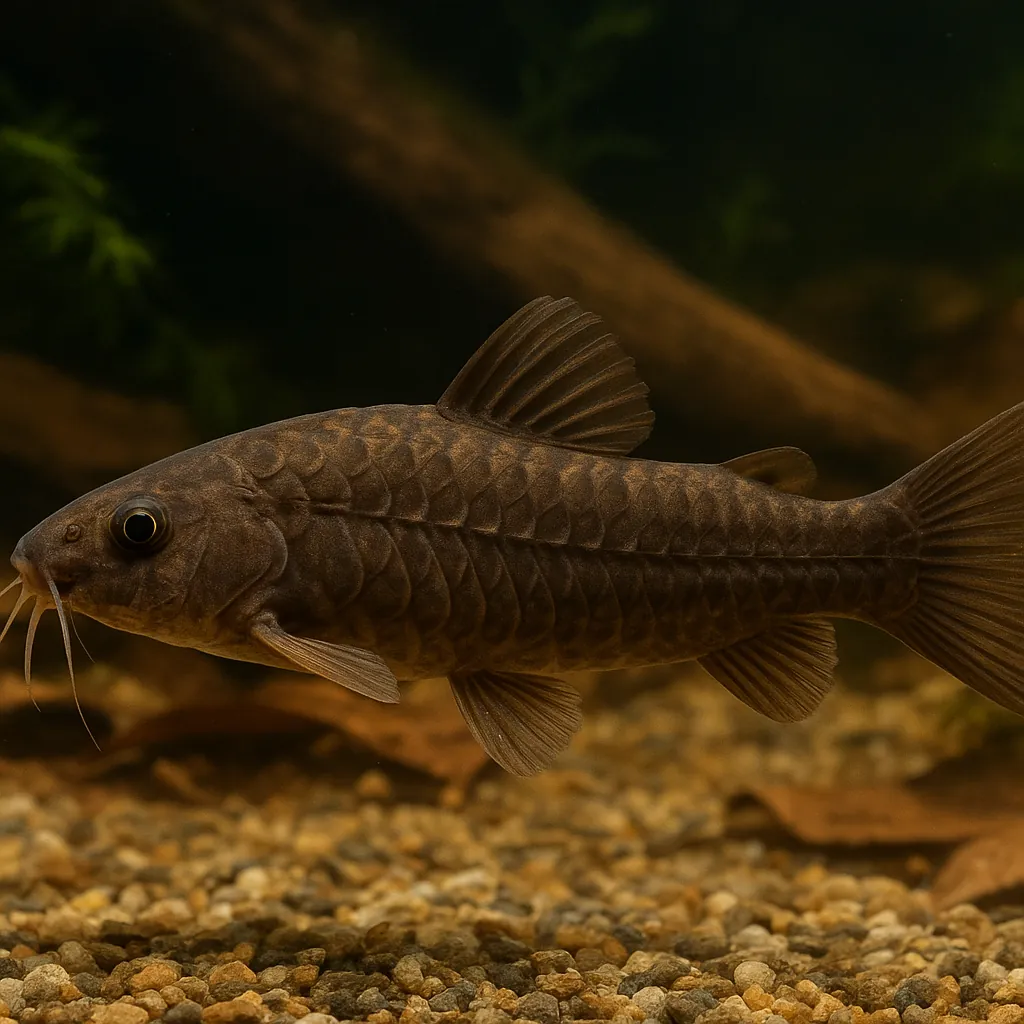
Brown hoplo
Introduction
The Brown Hoplo, scientifically known as Hoplosternum littorale, is a captivating addition to freshwater aquariums. Renowned for its hardy nature and unique armored appearance, this catfish appeals to both novice and seasoned aquarists. Its peaceful demeanor and adaptability make it a favored choice for community tanks.
What makes the Brown Hoplo stand out in an aquarium?
Its distinctive bony armor and active behavior add both visual interest and dynamic movement to the tank.
Is the Brown Hoplo suitable for beginners?
Yes, due to its resilience and straightforward care requirements, it's an excellent choice for those new to fishkeeping.
Care and Environment
Providing optimal care for the Brown Hoplo involves attention to tank setup, water conditions, and dietary needs.
What is the minimum tank size for a Brown Hoplo?
A single Brown Hoplo requires a minimum of 75 liters to thrive. For groups, a larger tank is recommended to accommodate their social nature.
What are the ideal water parameters for this species?
Maintain a temperature between 22°C and 28°C, with a pH range of 6.0 to 8.0, and water hardness between 5-15 dGH. Regular monitoring ensures a stable environment.
How should the tank be decorated for a Brown Hoplo?
Incorporate fine-grained substrates like sand to protect their sensitive barbels. Provide hiding spots using driftwood, caves, and robust plants such as Anubias. Floating plants can offer additional shade and mimic their natural habitat.
What does the Brown Hoplo eat?
As omnivores, they accept a variety of foods, including high-quality pellets, flakes, and live or frozen options like bloodworms and brine shrimp. A diverse diet supports their health and vitality.
Are there any specific challenges in keeping Brown Hoplos?
While generally peaceful, they may become territorial during breeding. Ensuring ample space and monitoring interactions can mitigate potential aggression.
Origin and Habitat
Native to South America, the Brown Hoplo inhabits a range from Argentina to Trinidad. They are commonly found in shallow, muddy waters dense with vegetation, including swamps and slow-moving rivers. These environments often have low oxygen levels, which the Brown Hoplo tolerates by gulping air at the surface.
How does the Brown Hoplo adapt to low-oxygen environments?
They possess a specialized ability to breathe atmospheric air, allowing them to survive in conditions with limited dissolved oxygen.
What type of substrate is typical in their natural habitat?
They are often found over silty or muddy bottoms, which they sift through in search of food.
Temperament and Compatibility
The Brown Hoplo is known for its peaceful nature, making it suitable for community tanks. They are social fish that thrive in groups of at least three, which encourages natural behaviors and reduces stress.
Can Brown Hoplos be kept with other fish species?
Yes, they coexist well with other non-aggressive species of similar size. However, avoid housing them with very small fish that might be seen as prey.
Do they exhibit any aggressive behaviors?
Generally peaceful, but males can become territorial during breeding. Providing ample space and hiding spots can help manage this behavior.
Interesting Facts
The Brown Hoplo exhibits several fascinating traits that intrigue aquarists.
How do Brown Hoplos reproduce?
Males construct floating bubble nests among vegetation, where females deposit eggs. The male then guards the nest until the eggs hatch, typically within four days.
Do they have any unique physical features?
Yes, they possess two rows of bony plates along their sides, giving them an armored appearance. Additionally, they have two pairs of barbels near their mouth, aiding in food detection.
Are Brown Hoplos active during the day?
They are primarily nocturnal but can display activity during the day, especially in well-structured environments that provide hiding spots and shaded areas.
Sources
All information in this article has been gathered from the following reputable sources:
Overview
Recommended Tank Size 39.6 Gallons (for groups of 3 or more) |
Minimum Group Size 3 |
Minimum Tank Volume 19.8 Gallons |
Maximum Adult Length 7.9 inches |
Average Adult Length 5.9 inches |
Shoaling (6+ required) Yes |
Preferred Water Type Freshwater, slightly acidic to neutral |
Temperature Range (°C) 22–28 |
pH Range 6.0–8.0 |
Water Hardness (dGH) 5–15 |
Typical Lifespan (years) 10 years |